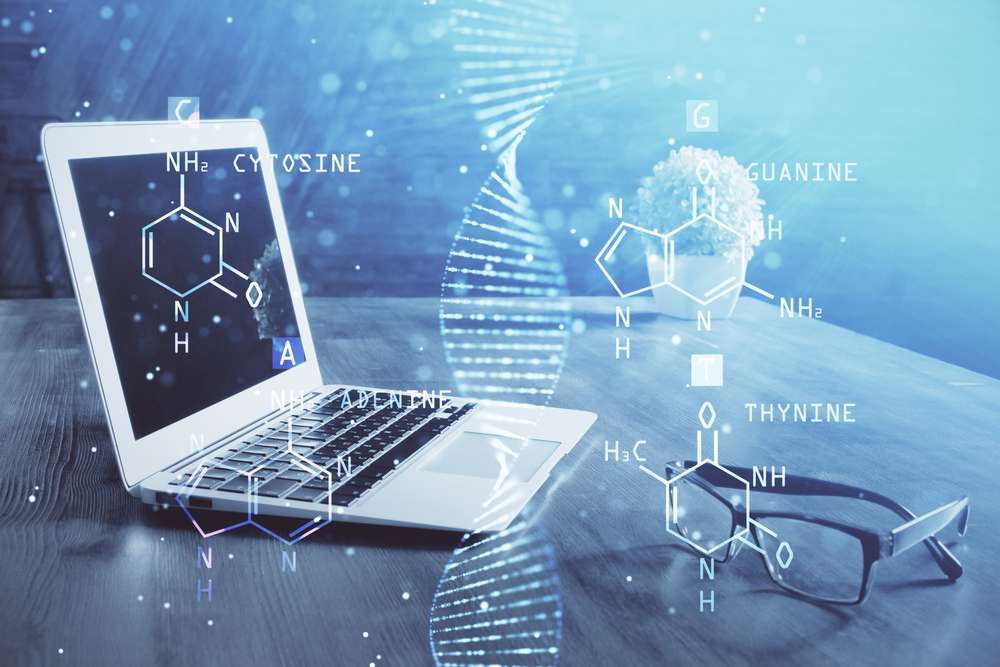Molecular Computing: DNA's Next Role Beyond Biology
The intersection of biology and computing has given rise to an extraordinary frontier: molecular computing. Using DNA as computational material, scientists are creating processors that operate on entirely different principles than silicon-based technology. This nascent field promises unprecedented computational density, with the potential to store exabytes of data in gram-sized DNA structures. Though still largely experimental, molecular computing represents a radical paradigm shift that could eventually complement traditional computing in specialized applications. The implications stretch from medicine to cryptography, offering solutions to problems silicon simply cannot approach.

The Building Blocks of Biological Computing
Our modern computing infrastructure relies almost exclusively on silicon-based transistors—microscopic on/off switches that form the foundation of digital logic. But nature has been processing information for billions of years using molecules like DNA and proteins. These biological information carriers operate using chemical reactions rather than electrical signals, enabling parallel processing on a massive scale. A single gram of DNA can theoretically store up to 455 exabytes of data—enough to contain all human knowledge many times over.
DNA computing leverages the inherent parallelism of biochemical reactions, with trillions of molecules simultaneously executing operations that would require sequential processing in conventional computers. The fundamental computing unit shifts from the transistor to the nucleotide, with adenine, thymine, guanine, and cytosine forming the basic alphabet for computation. While silicon circuits operate on binary principles, DNA computation can process information using these four bases, potentially allowing for more complex operations per computational step.
From Test Tubes to Computational Systems
The concept of molecular computing isn’t entirely new. In 1994, Leonard Adleman demonstrated the first DNA computer by solving a seven-point Hamiltonian path problem—a complex mathematical challenge requiring finding a route through seven cities without visiting any city twice. Adleman’s approach used DNA strands to represent different paths, with biochemical reactions eliminating invalid solutions and amplifying correct ones.
Modern molecular computing has evolved substantially since then. Current approaches include logic gates constructed from DNA structures that can perform basic computational functions like AND, OR, and NOT operations. These bio-logical gates function through strand displacement reactions—when one DNA strand displaces another from a complex due to greater binding affinity. The process creates cascading reactions that can implement computational algorithms.
Recent breakthroughs include DNA-based neural networks capable of pattern recognition and decision-making. Researchers at Caltech developed neural networks using DNA strand displacement reactions that could classify molecular patterns with high accuracy. These systems demonstrate rudimentary machine learning capabilities using purely biochemical processes—opening a pathway toward autonomous molecular systems that can respond to their environment without electronic components.
Applications Beyond Traditional Computing
The potential applications of molecular computing extend far beyond merely replicating what silicon does. Perhaps most promising is the field of in vivo computing—computational systems that operate inside living cells. Scientists have developed genetic circuits that can detect specific biomarkers and trigger cellular responses, effectively programming cells to serve as diagnostic tools or drug delivery systems.
Another compelling application is massive data storage. Microsoft and the University of Washington have demonstrated practical DNA data storage, encoding and retrieving digital data from synthesized DNA molecules. While current costs remain prohibitive for commercial use (approximately $7,000 per megabyte), the technology could eventually provide a solution for archival storage that lasts thousands of years—far longer than any existing digital media.
Molecular computing also shows promise for cryptography and security applications. DNA-based security systems could create virtually unbreakable encryption through physical rather than mathematical means. Certain computational problems that would take conventional computers millennia to solve could potentially be addressed through massively parallel DNA operations, though significant technical challenges remain.
Overcoming Biological Barriers
Despite its potential, molecular computing faces substantial obstacles. Speed remains a critical limitation—while molecular operations happen in parallel, individual reaction times are measured in minutes or hours, compared to nanoseconds for silicon transistors. Error rates also present challenges, as biochemical reactions aren’t as predictable as electronic signals.
Scientists are addressing these issues through several approaches. One promising direction involves developing hybrid systems that combine electronic components with molecular elements, leveraging the strengths of both. Another approach focuses on optimizing molecular structures specifically for computation rather than repurposing natural DNA. Researchers at NYU have created synthetic DNA molecules with enhanced stability and reaction speeds specifically engineered for computational tasks.
Environmental sensitivity represents another hurdle. DNA computers require carefully controlled conditions—specific temperatures, pH levels, and chemical environments—to function properly. Creating systems that can operate reliably in varied conditions will be essential for practical applications outside laboratory settings.
The Commercial Horizon
While fully functional molecular computers remain years away from commercial reality, several companies and research institutions are making significant investments. Catalog Technologies, a Boston-based startup, has developed a machine capable of encoding digital data into DNA at unprecedented scales. Their system can potentially store terabytes of information in DNA strands for long-term archival purposes.
Current cost estimates for DNA synthesis and sequencing—the writing and reading processes for molecular computing—remain prohibitively expensive for most applications, with synthesis costs around $0.001 per nucleotide. However, these costs have dropped by several orders of magnitude over the past decade, suggesting that commercial viability may arrive sooner than expected for specialized applications.
Market analysts project that molecular computing will first find commercial applications in pharmaceutical discovery and medical diagnostics, where the biological nature of the technology offers inherent advantages. The global market for specialized molecular computing applications could reach approximately $2 billion by 2030, according to emerging technology forecasts, though mainstream adoption would likely take significantly longer.
As silicon-based computing approaches fundamental physical limits, molecular computing represents not just an alternative path but potentially a complementary one—handling specific tasks that traditional computers struggle with while conventional systems continue managing our everyday computing needs. The result could be a technological ecosystem where problems are routed to the most appropriate computational substrate, whether silicon or molecular, creating a more diverse and capable computing landscape.





